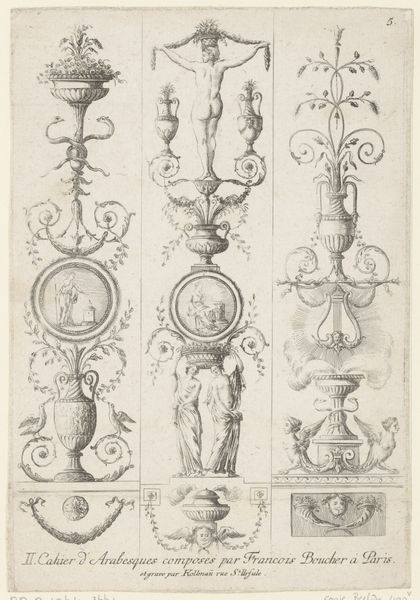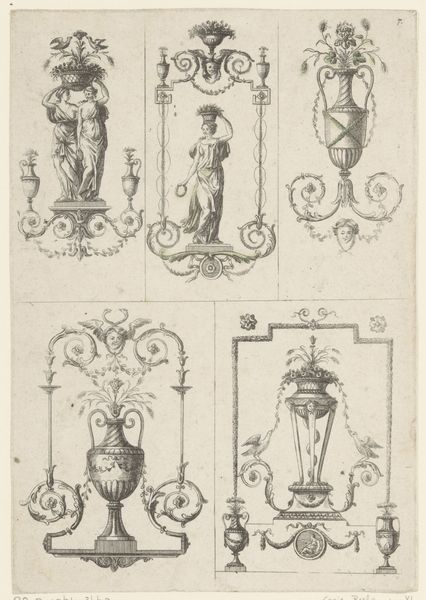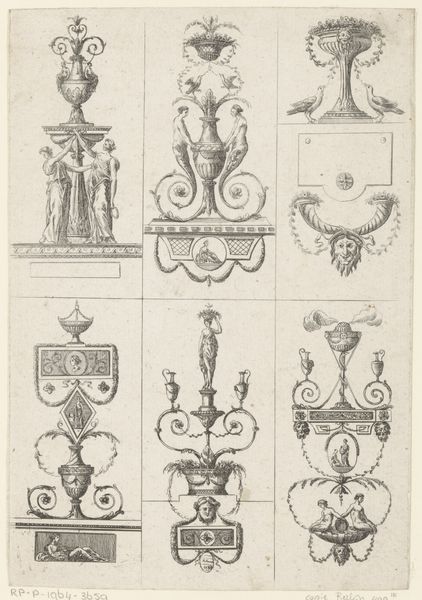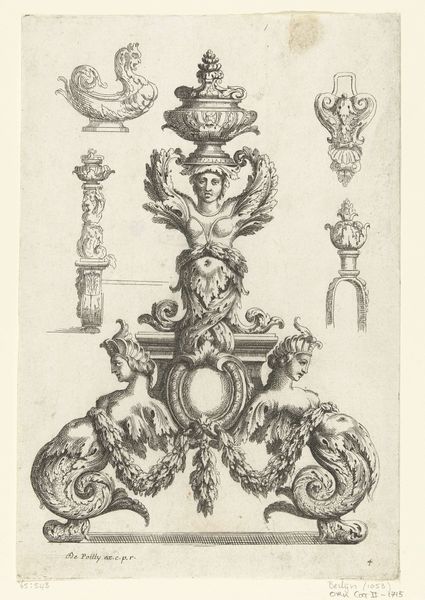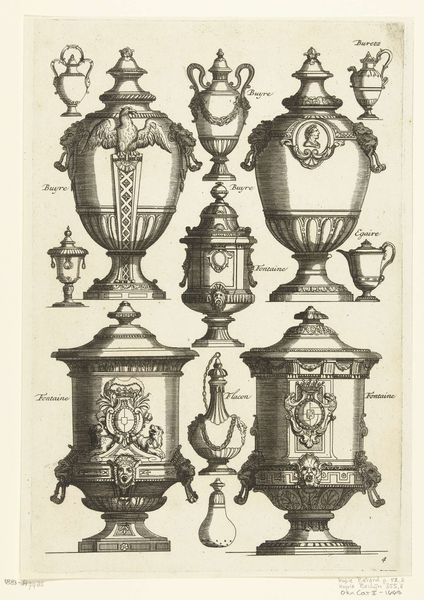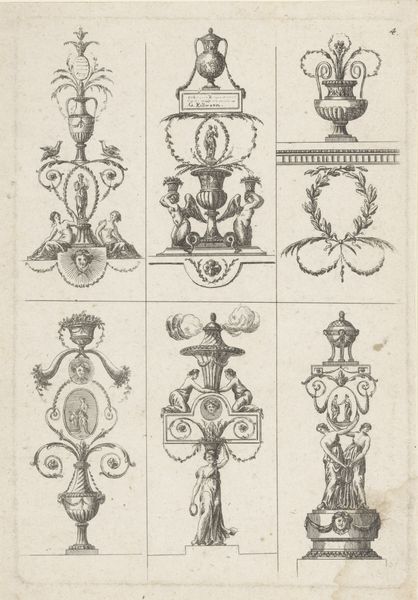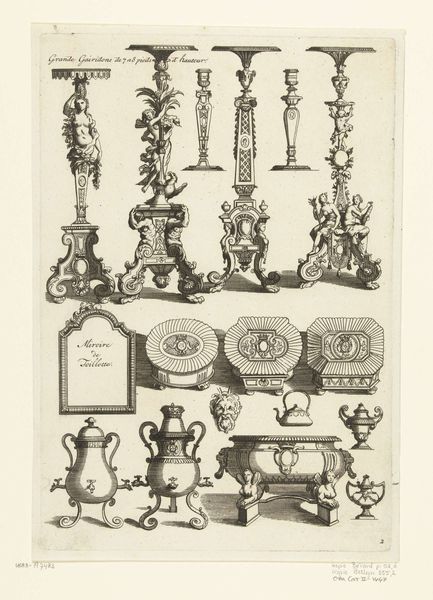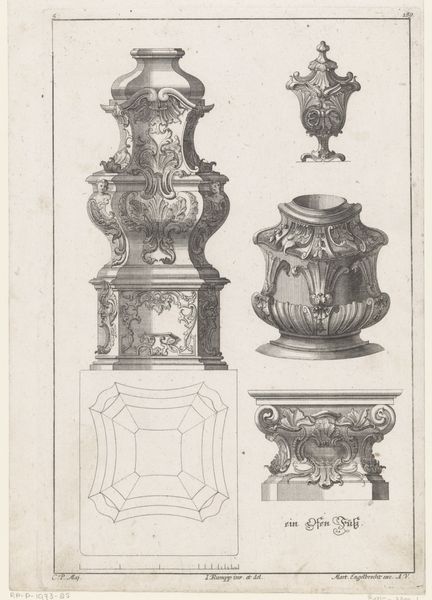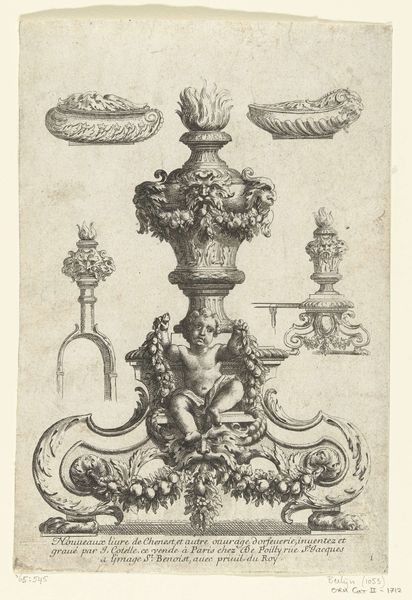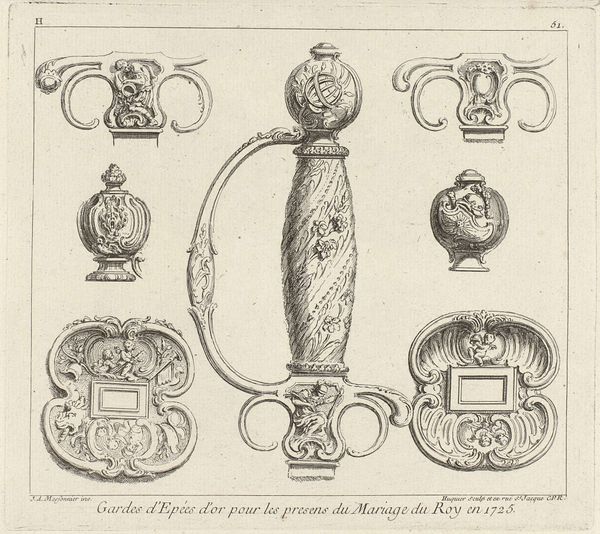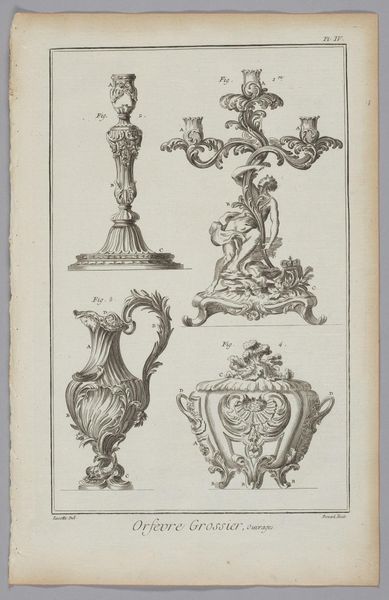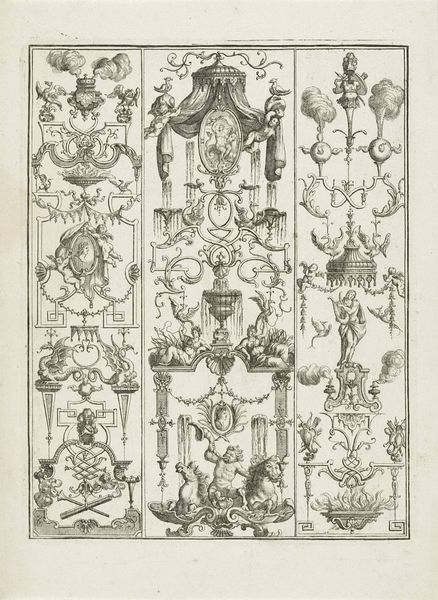
drawing, print, engraving
#
drawing
#
comic strip sketch
#
neoclacissism
#
light pencil work
#
quirky sketch
# print
#
sketch book
#
form
#
personal sketchbook
#
idea generation sketch
#
sketchwork
#
geometric
#
line
#
sketchbook drawing
#
storyboard and sketchbook work
#
decorative-art
#
sketchbook art
#
engraving
Dimensions: height 221 mm, width 150 mm
Copyright: Rijks Museum: Open Domain
Editor: This is "Six Scenes with Arabesques," dating from somewhere between 1746 and 1800. It's currently at the Rijksmuseum. It seems to be some kind of engraved print, depicting various vase and architectural motifs. What do you see when you look at it? Curator: I see a document deeply embedded in the social and material conditions of its production. It's Neoclassical, yes, but let's consider the labor involved in producing such prints at that time. Who was designing these, who was engraving them, and for what purpose? These weren’t merely aesthetic objects; they were tools for disseminating specific ideas about taste and class. Editor: That's a very interesting take. I hadn’t considered the labor involved beyond the artistic skill. How were these kinds of prints consumed? Curator: They were often used by artisans and craftsmen, furniture makers, perhaps, as models for ornamentation. Think about the raw materials that would be required to *realize* these designs – the marble for the vases, the precious metals for embellishments. The print itself is just paper and ink, but it acts as a blueprint for immense material consumption. It drives economies! Editor: So it’s more than just decorative; it’s tied to the wider material culture of the time. Does the neoclassical style play a role here? Curator: Absolutely. Neoclassicism, with its emphasis on order and rationality, provided a visual language for expressing power and control. Consider the materials that might go into such decorative art, like marble; owning that communicated something specific to those viewing or commissioning these kinds of objects. These arabesques become instruments, facilitating that symbolic exchange of prestige, don't they? Editor: That really shifts my perspective. I initially saw just a set of pretty designs, but it’s clearly much more interwoven into social and economic structures. Curator: Exactly! By tracing the production, materials, and consumption linked to a seemingly simple print, we uncover layers of meaning reflecting the world in which it existed. Editor: Thanks for shedding light on those layers; it makes it so much more fascinating!
Comments
No comments
Be the first to comment and join the conversation on the ultimate creative platform.
